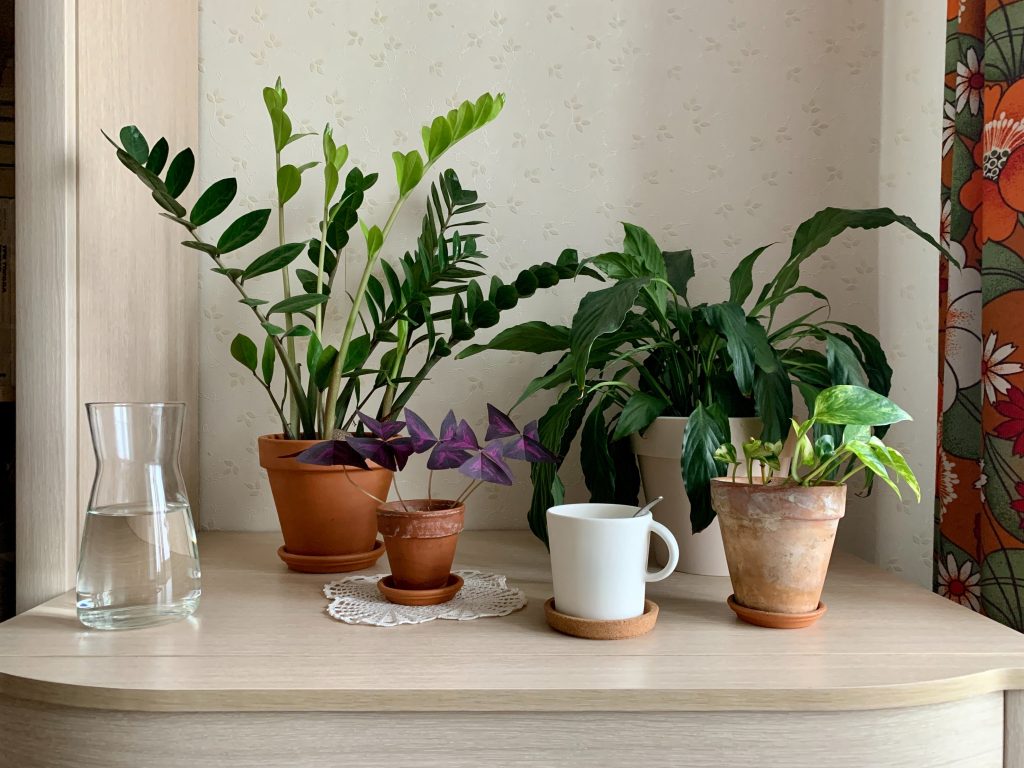Transforming your home into a healthier, more eco-friendly environment isn’t just about selecting energy-efficient appliances or reducing waste—it’s also about incorporating the natural purifying power of indoor plants. Beyond their aesthetic appeal, indoor plants play a crucial role in enhancing air quality, creating a serene ambiance, and promoting overall well-being. This guide offers insights into the benefits of indoor plants, the best species for air purification, and tips on how to strategically arrange them throughout your home for maximum impact.

The Green Benefits of Indoor Plants
Oxygenation: Plants are natural oxygen generators. Through photosynthesis, they absorb carbon dioxide and release oxygen, enriching the air quality of your home. This process not only supports physical health but can also improve concentration and boost mood.
Air Purification: According to NASA’s Clean Air Study, certain indoor plants have the remarkable ability to filter out common volatile organic compounds (VOCs) like benzene and formaldehyde. Introducing these plants into your living spaces can help reduce the concentration of airborne pollutants naturally.
Humidity Regulation: Through transpiration, plants release moisture vapour, which contributes to maintaining optimal indoor humidity levels. This natural humidification can be particularly beneficial during dry seasons, helping to mitigate dry skin, respiratory discomfort, and cold symptoms.
Mental Health Benefits: The presence of plants in indoor spaces has been associated with reduced stress levels, heightened productivity, and improved mental health. Creating pockets of greenery around your home can offer a tranquil escape from the pressures of everyday life.
Top Air-Purifying Indoor Plants
- Snake Plant (Sansevieria): Exceptional for its ability to emit oxygen at night, the snake plant is ideal for bedrooms and living areas. It’s drought-tolerant, requires minimal light, and is easy to care for.
- Spider Plant (Chlorophytum comosum): A champion in removing formaldehyde and xylene, the spider plant is pet-friendly and thrives in indirect sunlight. Its easy propagation makes it a gift that keeps on giving.
- Peace Lily (Spathiphyllum): Beyond its ability to neutralise toxins like ammonia and benzene, the peace lily brings elegance with its white blooms. It flourishes in low light, making it a versatile choice for any room.
- Rubber Plant (Ficus elastica): With its large, glossy leaves, the rubber plant is not only visually striking but also effective in purifying the air. It prefers indirect light and can grow into a substantial indoor tree.
- Boston Fern (Nephrolepis exaltata): Esteemed for its lush, feathery fronds, the Boston fern acts as a natural humidifier and air purifier. It enjoys cool places with high humidity and indirect light.
Arranging Plants for a Holistic Home
Layering: Achieve a dynamic look by mixing plants of various heights and textures. Utilise plant stands, shelves, or hanging pots to create vertical interest and make your spaces feel vibrant and full of life.
Grouping: Place plants with similar care requirements together to create striking visual impacts and facilitate easier maintenance. Grouping plants can also help create beneficial microenvironments for their growth.
Focal Points: Use larger plants, such as fiddle leaf figs or monsteras, as natural focal points in rooms. Smaller plants can complement these larger specimens, helping to balance and harmonise your living spaces.
Consider Light: The natural light available in your home will guide where to place plants for optimal growth. Most indoor plants prefer indirect light, so positions near windows that provide filtered light are usually ideal.
Incorporating indoor plants is a simple, yet effective way to enhance the eco-friendliness of your home. By choosing the right plants and arranging them thoughtfully, you can enjoy the myriad benefits they bring to your health, well-being, and indoor environment. As you care for your plants, you’ll find they not only transform your spaces but also enrich your connection with nature.

